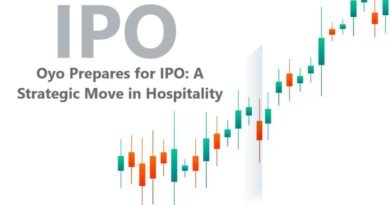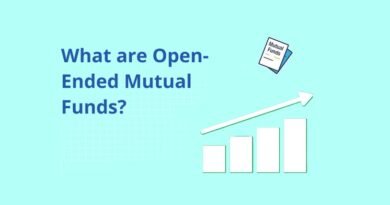
NPS vs ELSS: Which Tax-Saving Investment is Right for You?
When it comes to tax-saving investments, two popular options stand out for Indian taxpayers: the National Pension System (NPS) and Equity Linked Savings Scheme (ELSS). Both offer tax benefits under Section 80C of the Income Tax Act and have their unique features, advantages, and limitations. Choosing the right one depends on your financial goals, risk appetite, and investment horizon. Let’s dive deeper into the details of NPS and ELSS to help you make an informed decision.
What is NPS?
The National Pension System (NPS) is a government-backed retirement savings scheme designed to provide financial security after retirement. It is a long-term investment option regulated by the Pension Fund Regulatory and Development Authority (PFRDA). NPS encourages individuals to build a retirement corpus while enjoying tax benefits during the accumulation phase.
Key Features of NPS:
- Tax Benefits:
- Contributions are eligible for tax deductions under Section 80C, with an additional benefit of up to ₹50,000 under Section 80CCD(1B).
- The total tax deduction can go up to ₹2,00,000.
- Investment Flexibility:
- NPS allows you to choose between different asset classes such as equities, corporate bonds, and government securities.
- Investors can opt for Active Choice (self-managed allocation) or Auto Choice (age-based allocation).
- Partial Withdrawal:
- Partial withdrawals are allowed under specific conditions, such as education, marriage, or medical emergencies.
- Annuity Purchase:
- At maturity, 40% of the corpus must be used to purchase an annuity plan to ensure regular income during retirement.
- Lock-in Period:
- The lock-in period is until retirement, i.e., 60 years of age, with an option to extend up to 70 years.
- Low Cost:
- NPS has a low-cost structure compared to other investment options, making it ideal for long-term savings.
What is ELSS?
Equity Linked Savings Scheme (ELSS) is a type of mutual fund that invests primarily in equities and equity-related instruments. It is one of the most popular tax-saving instruments due to its high return potential and shorter lock-in period.
Key Features of ELSS:
- Tax Benefits:
- Investments in ELSS are eligible for tax deductions under Section 80C, up to ₹1,50,000 per financial year.
- High Return Potential:
- Being an equity-oriented scheme, ELSS has the potential to deliver higher returns compared to other tax-saving instruments.
- Lock-in Period:
- ELSS has a lock-in period of just three years, the shortest among all tax-saving options under Section 80C.
- Flexibility:
- Investors can choose between growth and dividend payout options based on their financial goals.
- Professional Management:
- ELSS funds are managed by professional fund managers, ensuring diversified and well-researched investment decisions.
- No Annuity Requirement:
- Unlike NPS, ELSS does not require investors to purchase an annuity, providing flexibility to use the corpus as desired after the lock-in period.
Comparison Between NPS and ELSS
| Feature | NPS | ELSS |
|---|---|---|
| Tax Benefits | Up to ₹2,00,000 (Section 80C + 80CCD(1B)) | Up to ₹1,50,000 (Section 80C) |
| Lock-in Period | Till retirement (minimum age 60) | 3 years |
| Returns | Moderate (market-linked with fixed income) | High (equity market-linked) |
| Risk Level | Moderate to low (diversified allocation) | High (primarily equity-oriented) |
| Liquidity | Limited (partial withdrawal with conditions) | High after 3 years |
| Objective | Retirement savings | Wealth creation and tax-saving |
| Annuity Requirement | Mandatory for 40% corpus | Not required |
| Cost | Low | Moderate (fund management fees) |
Pros and Cons
NPS Pros:
- Suitable for retirement planning.
- Additional tax benefit under Section 80CCD(1B).
- Stable and predictable returns due to asset diversification.
- Regulated and backed by the government.
NPS Cons:
- Long lock-in period with limited liquidity.
- Mandatory annuity purchase reduces immediate access to the entire corpus.
- Equity exposure is capped (50%-75%), potentially limiting returns.
ELSS Pros:
- Short lock-in period of 3 years.
- Higher return potential due to equity exposure.
- Flexibility to use the corpus post lock-in.
- Professional fund management.
ELSS Cons:
- High market risk due to equity orientation.
- No additional tax benefit beyond ₹1,50,000 under Section 80C.
- Returns are not guaranteed and subject to market volatility.
Which One Should You Choose?
The choice between NPS and ELSS depends on your financial objectives, risk appetite, and investment horizon:
- Choose NPS if:
- You are focused on long-term retirement planning.
- You seek a low-cost investment option with moderate risk.
- You want an additional tax-saving benefit under Section 80CCD(1B).
- You are comfortable with a long lock-in period and partial withdrawal limitations.
- Choose ELSS if:
- You are looking for high returns in a shorter time frame.
- You have a higher risk tolerance and can handle market volatility.
- You want flexibility in using the corpus after the lock-in period.
- You aim to combine wealth creation with tax-saving.
Conclusion
Both NPS and ELSS are excellent tax-saving options, but they cater to different financial needs. While NPS is ideal for long-term retirement planning, ELSS suits investors seeking short-term flexibility and higher returns. Assess your financial goals, risk tolerance, and investment horizon before making a decision. Consulting with a financial advisor can also provide personalized guidance tailored to your specific needs.
Disclaimer: This article is for informational purposes only and does not constitute financial advice. Investing involves risk. Consult with a qualified professional before making any investment decisions.






